|
| Front page | | Contents | | Previous | | Next |
Nature & Environment 2003 – Theme: Water in Denmark
Water use and recycling
We have become better at recycling water. Wastewater treatment has become more advanced and effective. No wastewater is discharged untreated. We have also become
better at saving water. Household water consumption has fallen by one quarter.
Wastewater derives from households, industry, commercial enterprises, and institutions. Wastewater is treated in treatment plants, to break down pollutants to the point where they can
no longer harm the environment. Treated wastewater is discharged into watercourses, lakes, and the sea, or it leaches into the ground.
Improved wastewater treatment
During the last 25 years, Denmark has extensively invested in an effective wastewater system based on sewers and wastewater treatment at treatment plants. Today, the majority of
Danish properties are connected to sewage systems, and most household and industrial wastewater is directed through the municipal and private treatment plants before being
discharged into the sea or watercourses. In 2001, the 29 largest and most advanced wastewater treatment plants treated almost half the wastewater in Denmark. Wastewater
treatment has been drastically extended and improved so that today, treatment plants remove the majority of all aerobic organic matter, as well as phosphorus and nitrogen.
Just under 60 per cent of wastewater received at municipal treatment plants comes from households and service industries, while the remainder comes from industrial enterprises. More
than half the sludge from wastewater treatment plants is recycled. It is mostly used as fertiliser on fields.
Water consumption is falling
During the last 10 years, household water consumption has fallen by one quarter. This has taken place in step with an increase in the price of water of 150 per cent. The correlation
between increasing water prices and falling water consumption might be due in part to green taxes on water charges – an effective incentive to save water. Greater environmental
awareness among the population might also be an important reason for the reduction in water consumption.
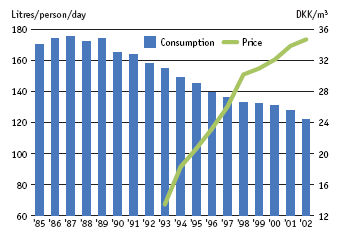
In 1989, each Dane used an average of approx. 170 litres of water a day. Consumption has now fallen to approx. 125 litres a day. At the same time, the average price of
water has risen from less than DKK 14 to DKK 35 (euro 2.0-4.6) per cubic metre. The graph shows changes in water consumption and price.
Source: Water supply statistics, Danish Water and Waste Water Association
This indicator shows changes in household water consumption (litres per person per day) in relation to changes in the average water price paid by consumers (DKK per m3). Water
consumption statistics exist for 1985 onwards. Water price statistics exist for 1993 onwards.
The trend for 1993 to 2002 shows household water consumption has fallen by approx. one quarter. During the same period, water prices have risen by over 150 per cent, i.e. in 2002
one cubic metre of water cost two and half times as much as it did in 1993. Water prices are made up of a water discharge tax (41 per cent), VAT (20 per cent), green taxes (14 per
cent), a variable water charge (12 per cent), a fixed charge (9 per cent), a fixed charge for wastewater (2 per cent), and a national charge for wastewater (2 per cent).
The clear correlation between increasing water prices and the fall in household water consumption supports and confirms the effect of green taxes as an incentive to save water. Water
prices may increase over the next few years as waterworks face continually increasing expenses, including compensation payments for restrictions on land use to protect groundwater.
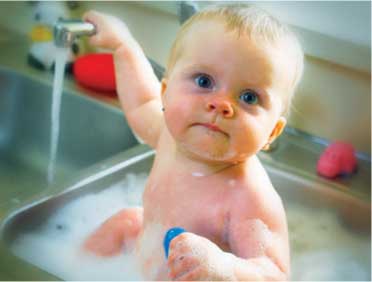
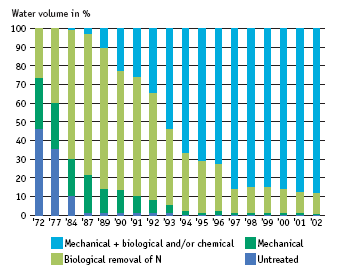
In recent years, 87 per cent of wastewater has been treated mechanically, chemically, and biologically.
Source: The Danish EPA
This indicator shows how wastewater is treated at treatment plants in Denmark, divided into various types of wastewater treatment. The simplest type of treatment is mechanical
treatment, in which primarily only organic matter is removed. Today, this type of treatment only takes place at small treatment plants. Larger treatment plants generally use the most
advanced type of treatment, where wastewater is treated mechanically, biologically, and chemically.
The figures from 1972 until today show that wastewater treatment has become progressively more advanced. In 1972, wastewater discharges were divided equally between untreated,
mechanically treated, and mechanically/biologically treated wastewater. Today, no wastewater is discharged untreated, and 87 per cent of wastewater is treated at the most advanced
treatment plants.
This is largely due to the 1987 Action Plan for the Aquatic Environment. Before this plan was adopted, only approx. 10 per cent of the total volume of wastewater was treated at the
more advanced plants. At international level, introduction of the Urban Wastewater Treatment Directive has not had great significance for Denmark, as most of the directive's
requirements had been introduced in the first Action Plan for the Aquatic Environment. However, implementation of the directive has led to a greater number of tests at the large
treatment plants, and in the future, the directive will make it necessary to increase the degree of treatment for organic matter at the smaller treatment plants.
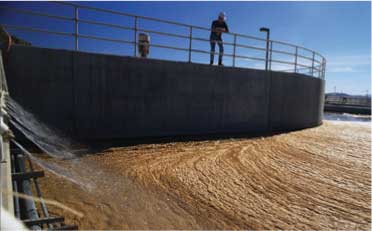
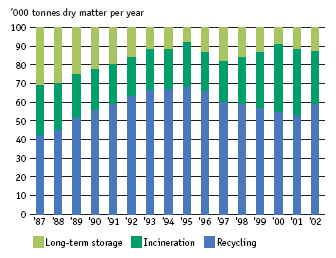
More than half the sludge from wastewater treatment plants is recycled. The majority of it is applied to agricultural land, some of it is incinerated and recycled as ash
(e.g. in cement), and the remainder is stored.
Source: The Danish EPA
This indicator shows where sludge from wastewater treatment plants has ended since 1987, divided into three categories: Recycling, incineration, and long-term storage. In general
recycling of sludge is achieved in a manner that it can be directly used as fertiliser on agricultural land, and it is transported directly from municipal treatment plants and applied to fields.
Long-term storage covers both mineralisation of sewage sludge, and sludge that is landfilled. In the case of mineralisation, sludge is processed over a long period (10 years), so that it
can subsequently be used on agricultural land, if it fulfils the quality requirements.
Stricter sludge quality requirements have led to general uncertainty about recycling, resulting in the decline in recycling in recent years. If sludge quality is too poor, it is landfilled.
Incineration has increased significantly since 1998. This increase is due to the fact that since 1998, a number of enterprises have taken delivery of sludge (the ash) for recycling in
sandblasting agents and cement. In addition, the increase results from stricter limit values for organic environmental toxins and heavy metals for sludge applied to agricultural land. In
2002, 59 per cent of sludge was recycled – primarily as fertiliser on fields.
In recent years, sludge quality has continually been improved. This is partly the result of voluntary phase-out initiatives from industry, for example, for nonylphenol. The goal laid down in
Waste 21 of recycling 50 per cent of sewage sludge in 2004 has thus already been reached, despite the decline in recycling in recent years.
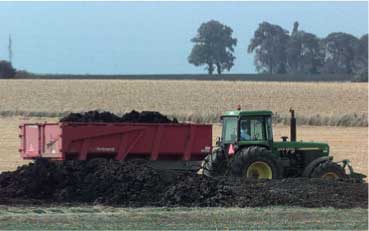
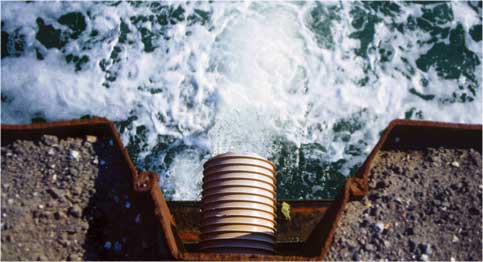
Industry pollutes no more than households
Industry is generally no worse than households in terms of the contamination of sewage sludge. Although there can be a strong, localised correlation between individual industries and
contamination by heavy metals and/or xenobiotic substances. This is the conclusion from an investigation into the discharge of pollutants by industry. Under the investigation, sludge from
160 wastewater treatment plants was analysed, and the initiatives that have been introduced to reduce the discharge of pollutants, and hence their volumes in sewage sludge, were
evaluated.
The major part of pollutant quantities found in wastewater accumulate in the sludge as the wastewater is treated. Sludge quality has vital significance for how it can be disposed of or
recycled. If the content of heavy metals and xenobiotic substances is sufficiently low, it can be used as fertiliser on fields or in forests. However, if sludge quality is too poor, the only
disposal options are incineration or landfilling.
In the analysis, the quality of sludge from the component of wastewater that derives from industry is compared with that from households in the catchment area for each treatment plant.
The comparison makes it possible to see whether there is a difference in the content of heavy metals or xenobiotic substances in the sludge, depending on the relative proportions of
wastewater the treatment plant receives from industry and households. The results show a weak trend whereby the concentration of copper and mercury falls as the proportion of
wastewater from industry rises. At the same time, households are the biggest relative source of mercury in sludge. This is because enterprises are so well-regulated today by
environmental approvals from counties and municipalities, that the remaining contamination derives from individual areas not yet subject to regulation, or from households. A few years
ago, the large, heavy industries were responsible for a relatively large proportion of the contamination with xenobiotic substances in wastewater.
Source: The Danish EPA
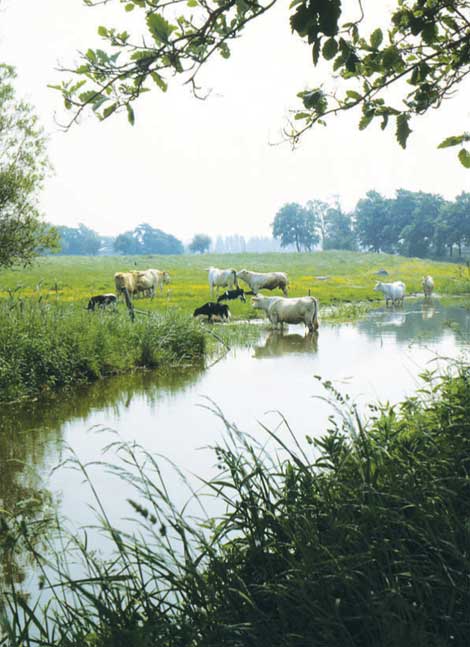
| Front page | | Contents | | Previous | | Next | | Top |
Version 1.0 October 2004, © Danish Environmental Protection Agency
|